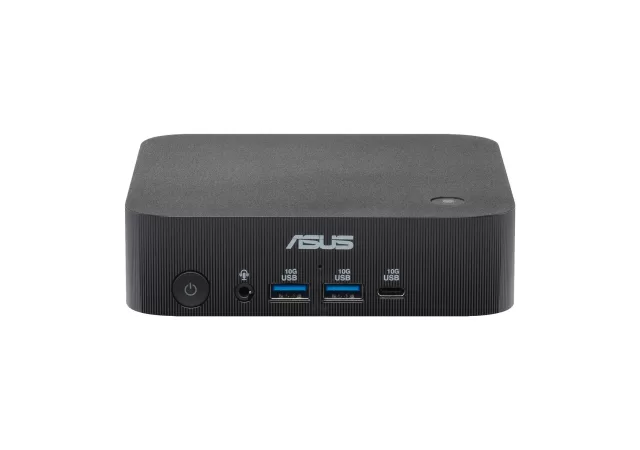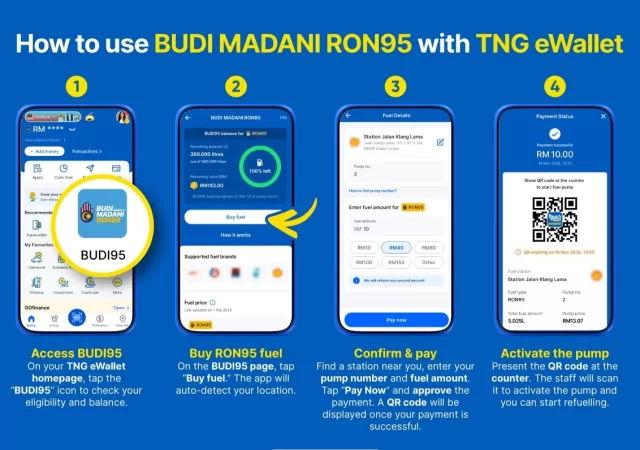The Samsung Galaxy Note20 series launched with two variants in the line-up. One is the more expensive, more premium, more feature packed Note20 Ultra. It is a formidable machine with great parts in them that makes for very compelling us cases. But it was superbly pricey of a machine too. It made us question everything we thought we wanted in a smartphone.
But they also launched a Samsung Galaxy Note20. No, no ‘plus’ or ‘lite’ moniker here. Just a plain old Samsung Galaxy Note20, a regular name that we are more used to. But it is not quite a Note20 Ultra though this regular one. Of course, they are bred from the same lab and factory. They have plenty of similarities at that, but they are also somehow very different devices.
The question here is of its worthiness to be called a Samsung Galaxy Note20 device. It has an S Pen, yes, but does it fit the criteria of a Galaxy Note20? It is priced like a Galaxy Note device, but is it worth that price? It looks like one, but is it worth the clad of the Galaxy Note name? Most important of all, is this a better buy than the Galaxy Note20 Ultra? Is it worth buying at all? We find out.
Design

First of all, it looks nearly exactly the same as the Samsung Galaxy Note20 Ultra. In every way, it mimics the looks and the design language of the more premium device, except in proportions. It is a smaller device compared to the Ultra.
Smaller does not mean worse though. In some eyes, including ours, the Samsung Galaxy Note20 looks better than its more premium brother. It looks like a traditional Galaxy Note unit, not a behemoth of a slate that looks a little out of place on the table. It is, in our opinion, the prettier device in the series, helped by its Cloud Green Colour scheme.
Some will argue that the Galaxy Note20 Ultra is more of a stunner. They say that it looks more stunning than the Samsung Galaxy Note20. More dramatic they say. We respectfully disagree.
Put them side by side, the Samsung Galaxy Note20 Ultra looks a little out of proportions. The Galaxy Note20 Ultra looks a little too much, overly bulky. It looks obnoxious with a bulging rear camera module somehow.

The Samsung Galaxy Note20 is more subtle in that. It is a smaller device, but not by much. It is a sizeable device still, but acceptably and comfortably large. But it is not obnoxious in design. The camera at the back is built and designed like a normal device, flush into its body. There is still a small bump, yes, but not as disproportionate as the Ultra. Somehow, its body feels svelte and clean.
Everything else on the device is about the same as the Ultra though. From the placement of the speaker units, the mic holes, and even the power and volume buttons. We are pleased that the power button is now back in the correct side of the device and they stayed away from the annoying Bixby button from the Galaxy Note9.
Overall, there is not much to say about the design of the device. Except, there are more colour choices for the Samsung Galaxy Note20 compared to the Galaxy Note20 Ultra. While sometimes that makes me think that the extra colour choices are more like consolation prizes to make up for the fact that you do not get as much power, we prefer the colour choices you get from the Samsung Galaxy Note20 instead of the Samsung Galaxy Note20 Ultra, somehow.
Hardware
The Samsung Galaxy Note20 packs mostly the same internals as the Samsung Galaxy Note20 Ultra save for the RAM size, and battery size. Of course, the battery size in a direct effect of the body size. It also packs less powerful cameras compared to the Galaxy Note20 Ultra, which is quite expected thanks to the price differences. It does not mean that the Samsung Galaxy Note20 is less potent than the larger Note20 Ultra though.
Specifications
| Processor | Samsung Exynos 990 Octa-Core 7nm 2x Mongoose M5 @2.73GHz 2x Cortex A76 @2.50GHz 4x Cortex A55 @2.0GHz |
| Graphics Processing Unit (GPU) | Mali-G77 MP11 |
| RAM | 8GB |
| Memory (as tested) | 128GB |
| Display | Super AMOLED Plus 6.7-inch 1,080 x 2,400 pixels ~393ppi HDR10+ Corning Gorilla Glass 5 |
| Operating System | OneUI 3.0 based on Android 10 |
| Battery | Non-Removable Li-Po 4,300mAh Fast Charging 25W Wireless Charging 15W Reverse Wireless Charging 4.5W |
| Connectivity | 5G Dual SIM Wi-Fi WLAN 802.11 a/b/g/n/ac/ax GPS/A-GPS, GLONASS, GALILEO, BDS A2DP AptX Bluetooth 5.0 LE OTG Support USB Type-C 3.2 Samsung Wireless DeX |
| Camera (s) | REAR: 12-Megapixel (f/1.8, 26mm wide angle) 64-Megapixel (f/2.0, 27mm telephoto) 12-Megapixel (f/2.2, 13mm ultra-wide angle) HDR 8K video recording (24fps) LED flash FRONT: 10-Megapixel (f/2.2, 26mm wide angle) 4K video recording (30/60fps) |
| Sensors | Accelerometer Proximity Under-Display Ultrasonic Fingerprint Ambient Light Gyroscope Face Unlock Compass |
User Interface – The OneUI 3.0

Samsung, until the Galaxy Note8 at least, always had TouchWiz. TouchWiz, if you have not known yet, were very similar to OneUI that we know and love today. Technically as well, OneUI is more of an evolution of TouchWiz.
TouchWiz though, at some point was clunky, slow, and heavy on its processor. That is also why Samsung’s devices do not seem all that fast at some point even when they are packing the most powerful hardware in the field. The old TouchWiz User Interface (UI) was one that was flawed since its first developed into the ever so popular Samsung Galaxy S.
TouchWiz though was one of the best-known Android overlay UIs in the world at some point and has grown to be one of the most intuitive Android overlays there is. Plenty of the Android functionality that we know and love today can be traced back to the innovations made on Samsung’s TouchWiz. Split screens for example, was made a thing on TouchWiz with the Samsung Galaxy Note line-up.
Because of that initial flaw in design and architecture though, TouchWiz still faced stability issues from time to time and it still feels clunky. That is why OneUI was born. All these history lesson though is here for a reason.

OneUI, in its third generation, is really a platform that is still based on TouchWiz. The latest OneUI 3.0 of course is an Android 11 overlay for Samsung devices. The OneUI evolution allows Samsung to develop something that can be used on mobile interfaces and desktop interfaces. That is their DeX UI, for your information.
But if you do not turn OneUI into DeX, the experience has a lot more in common with TouchWiz UI than stock Android. Because it is Samsung, there are plenty of blacks that is built into the UI. Black, of course, shows off Samsung’s very impressive OLED technology to the world. It also makes more sense in power consumption terms.
That also means that the OneUI is just as intuitive as TouchWiz that came before, maybe even more so. Since OneUI 2.0 onward, you can have the regular Android gesture controls to move away from the traditional three button navigation layout. This is the swipe up from the bottom of the display for ‘home’, swipe up and hold for ‘recent apps’, and swipe from the left or right edge of the display for ‘back”.
Of course, you can still opt to have the traditional three button navigation layout too. You can either have them as proper buttons, or thin lines for gesture controls (swiping up), or not have the lines at all but still utilize that three-button configuration (swiping up). The choice of experience on the OneUI is one of the widest I have come to know.
Of course, if you came from other Android devices and are used to the regular Android gesture controls, you might want to switch to that in the settings. If you are more used to the three-button layout, like me, I still use them but with gestures. There is something for everyone.
There are no noticeable differences between the Samsung Galaxy Note20’s OneUI and Galaxy Note20 Ultra’s OneUI here. As far as we know, you are practically getting the same UI on both devices anyway. The only thing you do not get on the Galaxy Note20 is probably the fast display at 120Hz.
Smart Switch

Changing your smartphone is a hassle. Apple developed the iTunes to make switching iPhones from one generation to another much easier. Via iTunes, your contacts are saved, the apps you have are saved, your device settings are saved, even your home screen arrangement can be saved.
Switching Android smartphone is a little trickier than that. Android devices rely on your Google account to not just work, but for data back up as well. We are not saying that it is not great, it is just not as clean and straightforward because of device compatibilities, internet speed and more. There is the problem of switching between different Android platforms too, to make it another headache.
Samsung was one of the first Android partners to make switching smartphones a breeze with their phone cloning app, Smart Switch. We have been using Samsung devices for a long time, so we are quite familiar with the system. The thing is, it just gets easier and easier to switch from one device to another with Smart Switch, even from Apple iPhones.
Of course, Smart Switch is not a unique app on its own in the app market. There are other manufacturers who have developed their own version of phone cloning app for their own uses too. Like a lot of these apps, you can only use Smart Switch to receive data as a Samsung device. You can receive from any devices including an Apple device.
Unlike previous iteration of Smart Switch, the new version allows you to transfer data via WiFi direct too. Which also means that Samsung does not need to include a USB OTG dongle anymore in their box (they do not, by the way). It also means that transferring your data is a lot more convenient now. You just have to be patient, because it does not happen immediately. There are app compatibility problems as well, even if you are using a Samsung device to switch to the Samsung Galaxy Note20.
Performance

Thanks to Samsung’s proven Exynos 990 platform with 5G capabilities (there is a Note20 without 5G capabilities for sale in Malaysia too), the Samsung Galaxy Note20 performs just like a flagship should. Sadly, the one in Malaysia only gets the Exynos variant. There is a Qualcomm Snapdragon 865+ platform variant in another market, but the Asian market has not been getting the Qualcomm variant of the device since the Samsung Galaxy S4.
To be fair, there are some performance differences on both variants. They say that the Qualcomm tends to perform better in certain areas and is on par with the Exynos 990 in plenty of other areas. We cannot say for sure because we have could not test the Qualcomm variant. Still, The Samsung Exynos platform has been a proven platform. In that case, why would it fail us now?
Call Quality and Connectivity

If you are familiar with Samsung’s devices of the past, nothing has changed much in this feature. The only difference on our test unit is the 5G capability which we do not even get to test out because 5G connectivity is extremely limited in Malaysia. When I say extremely limited, there are no commercially viable 5G data plans just yet in Malaysia.
Making calls though is a very standard affair with the Samsung Galaxy Note20. The Phone app icon is exactly the same as before. Even the layout within the app has not changed since its first inception in the Samsung Galaxy S. There are probably minor changes like button sizes, or fonts, or even how lines look. But the general layout and look has remained consistent. There are a few things you can change with the dialer if you dig through the settings. The thing is, a plain old dialer on your smartphone has never bothered anyone anyway. It does the job, and that is the most important part.
When you do place a call or receive a call, the default volume on the earpiece tends to be a little soft. I usually keep the earpiece volume to the maximum just for clarity sake. When the person at the other end of the line is speaking to you properly with his/her device to their ears, it works perfectly, and their voice is as clear as day. You do want to be careful with volumes though, the Samsung Galaxy Note20 somehow has a slightly louder earpiece than what we are used to, same goes to the Samsung Galaxy Note20 Ultra.

On our end, the other person on the other end of the line never complained about the clarity of our voice. That is even with loudspeaker turned on and the device about a meter away from us. We have used the device in a few conference calls a well, with no more than four participants sitting on a small table. Then again, smartphones are never meant to be used as the primary teleconference tool. Still, the loudspeakers are loud, louder than the Samsung Galaxy Note9 and the Samsung Galaxy Note10.
On the front of signal reception, the Samsung Galaxy Note20 5G is consistently getting full bars of signals in town. There are several known blind spots in town as well, in those areas, even the powerful antennas of the device do not pick up any coverage. That also means that in most of Klang Valley, you are going to get crystal clear phone calls with full bars of signal. Even if the device only shows one bar of signal, you are going to be okay for calls.
The same may not be said too much with data though. When the bars are more than half to full, you get the full beans of your data connection speed; 4G speeds. When the signals drop below that, you mostly get HSPD 3G speeds supposedly. There are times when even 3G speed is not what you get though. Still, you can send out and receive your WhatsApp or Telegram messages of you are patient enough. Even your emails might not get through immediately, so you might want to keep that in mind.
Gaming

This section has been a measuring stick for a while on smartphones. It is not just smartphones though; gaming is also a measuring stick for PCs. Since a smartphone is more like a modern pocket PC now, it is only appropriate that we use these devices for games.
Games on mobile platforms has evolved a lot though. Games on mobile platforms are a lot more demanding in terms of graphical qualities and therefore require a lot of power from the processor and GPU of the device. That also means that the SoC must have enough power to deliver smooth, great looking games properly, just like the PC.
The games we tested the Samsung Galaxy Note20 with are PUBG Mobile, Asphalt 9, Arena of Valor (AoV), and Sky Force: Reloaded. Among these games, the most graphics and processor intensive game is PUBG Mobile since games can take up to 20 minutes at a time and there are plenty of open world rendering to do here. Of course, there are also games like Call of Duty Mobile which is also very demanding on the GPU and CPU, but we have not gotten around to playing that game, so PUBG Mobile it is.

PUBG Mobile defaults to the highest settings available to the game on the Samsung Galaxy Note20. We did not have to fiddle with the settings any further, in this case. Framerates looks consistent and there is very little lags in terms of graphics or even input. That is an indication of good power from the SoC. The heat build up is reasonable as well without frying your hands in longer game sessions.
On games like AoV and Sky Force: Reloaded then, the Samsung Galaxy Note20 handles them like a champ. Even when the screen gets busy, there are no stutters or lags you can see on the display. There are probably one or two dropped frames, but they are not noticeable when you are in game. While there is no 240Hz response rate or 120Hz refresh rate here, you are not playing at a disadvantage in these competitive games. You still can cope and respond accordingly.
Of course, if you are coming from a faster display with an even faster response, you are going to feel that this device is a little slow when it comes to these games. Keep in mind also that the Samsung Galaxy Note20 is never really made for gaming. Gaming just complements what the Samsung Galaxy Note20 does best – productivity.
Multitasking and Productivity

The Samsung Galaxy Note20 has always been a productivity star. The first Samsung Galaxy Note in the series brought stylus back into smartphones. The Samsung Galaxy Note20 puts the power of creation in your hands.
The Samsung Galaxy Note20, as mentioned time and time again, is a very similar device to the Samsung Galaxy Note20 Ultra. It still has the very useful and iconic S Pen stylus that is now fitted to the left side of the device. It also has a large display still, a larger display than most devices today still at 6.7-inch.
The device’s display is still smaller than the behemoth that is the Samsung Galaxy Note20 Ultra. Of course, in terms of multitasking, bigger displays also mean you have more real estate to play with. That does not mean that you should not be relying on the Galaxy Note20 for productivity and multitasking.

You still have multi-window functionalities on the Samsung Galaxy Note20. Up to two apps can be open at the same time on a side-to-side or a top-and-bottom layout depending on your device’s orientation. Thanks to an ample 8GB of RAM as well, both apps can load as fast as they can be at the same time without you noticing any stutters or lags.
That also means that you can have multiple Google Chrome tabs open on the device at the same time without any page refreshing when you visit other tabs. As usual, I tend to have over 40 tabs open on Google Chrome at the same time on the Samsung Galaxy Note20 with no stability or load issues on the app, or other apps for that matter. You can even have Google Chrome and other apps open at the same time thanks to multi window. Even that does not seem to slow the device down.
Benchmark
We have said time and again that benchmarks are not everything. They do give an insight to how a smartphone and its hardware work though. Despite its scores, some budget smartphones actually feel and work better than the numbers may suggest. In certain situations too, some devices feel worse than the numbers suggests. So do take the numbers with a pinch of salt. Still, here are the numbers from the benchmarks.
The S Pen – Mightier Than Ever Before

Like the Galaxy Note20 Ultra, the S Pen found on the Samsung Galaxy Note20 is made to be faster and better than before. In terms of size and shape, you can technically take the Samsung Galaxy Note10’s S Pen and slot it into the Galaxy note20’s S Pen slot, it will fit perfectly. They are exactly the same shape and size.
The S Pen on the Galaxy Note20 is much faster though. There seems to be no input lag between the S Pen and the Note20’s display. Each stroke of the almost instantly translate into lines on the display. If you think that the Samsung Galaxy Note10 had a natural feel while using the S Pen, you will get your mind blown with this device. The lines are just keeping up with the Pen however fast you write.
It is not just an improvement on the speed and latency of the S Pen that Samsung has improved though. Its gesture control now is now even more than ever. You do not need to be in the camera app only to use S Pen gesture controls. You can create customised strokes too for even more functions making the S Pen the only remote you need for your Galaxy Note20. It can even be your presentation tool when you mirror your display on a smart display or even plug the device into a display via HDMI.
All these functionalities are only possible thanks to Bluetooth though. Which also means that the S Pen is still battery operated. The battery charges when you slot the S pen into the S Pen tray of the device though, quickly at that. While only having a battery life of about 30 mins on the S Pen, you can put it into the slot and it will charge to full within a minute, less actually.
Battery Life

The Samsung Galaxy Note20 packs a 4,300mAh battery. That is 200mAh smaller than the more premium Galaxy Note20 Ultra. While it is smaller, it is still a significant size in a smartphone. Since the battery needs to power a smaller display too, the battery life should not differ by much to the Samsung Galaxy Note20 Ultra.
Samsung promises that the Galaxy Note20’s 4,300mAh battery should last about 15 to 16 hours of continuous usage. That is about one full working day for us. We have not been using the device continuously for that long, so we are not able to confirm nor deny the numbers they put up on their website.
Our typical usage of the device was a couple of phone calls in a day, plenty of WhatsApp messaging, Telegram messaging as well, Emails, YouTube videos, A little bit of Netflix toward the end of the day, taking a few photos from time to time for social media, some music playing via Spotify through our own wireless earphones (since there is no 3.5mm jack), even some games from time to time. Most of our calls never lasted more than two minutes at a time. In fact, most of our phone calls are done within a minute. In our typical use case, the device leaves the charger at 7.30 a.m. most of the time too.

In our review period, the Samsung Galaxy Note20 could last us a whole day from 7.30 a.m. all the way to 11.00 p.m. and still have more to give. We typically put the device into charge by 12.00 a.m. at the latest. Typically, the device would still have about 10-15% of battery left when we plug it in. We recon that the 10% left of the device could last another 45-minutes to an hour if you use the device conservatively, longer if you put your device in ultra-battery-saver mode.
Of course, there are some atypical situations where we use the device for plenty of videos, connect the device to smart displays for presentations, and even using the devices as our data hotspot. In those conditions the device tends to drain its battery a little faster than our typical use. In that case, the device will cry out for a charger by about 9.00 p.m. But that also depends on how extensive you use certain functions, temperature, and plenty of other things really.
Display

The Samsung Galaxy Note20’s Android based OneUI is displayed through a brilliant Super AMOLED display at 6.7-inch. Yes, that is smaller than the Galaxy Note20 Ultra. It packs less resolution too at Full HD+. You need to justify that extra MYR 900 that you are paying for on the Galaxy Note20 Ultra somehow.
It is still an HDR10+ certified display with a punch hole in the middle under a Corning Gorilla Glass 5. It is still a premium Super AMOLED Plus technology. Just that you do not get the 1440p resolution.
Thing is, at this size the difference between 1080p and 1440p is so small that it is negligible. You can hardly see the difference between 1440p and 1080p at this size, which also means it does not make plenty of difference. What might make it feel different in the hands is the refresh rate of the display.
The Dynamic AMOLED 2X found on the Galaxy Note20 has up to 120Hz refresh rate. Of course, you can only use that 120Hz on 1080p Full HD+ mode on the display. In that sense, you might get a smoother sensation or feel on OneUI 3.0 on the Samsung Galaxy Note20 Ultra.

It is a minor thing though, this refresh rate, or lack of it. The interface is still a smooth operator without the 120Hz refresh rate. There tends to be a bit more blur when you are scrolling within the interface, which is a given at 60Hz. Coming down from a 120Hz also makes it feel a little clunky somehow. There is virtually no difference between the two though, just a minor difference in feel.
The colours that re on the Samsung Galaxy Note20 is brilliant thanks to Super AMOLED Plus technology. It is no Dynamic AMOLED 2X, but colour contrasts are just as expectedly bright and excellent. There is hardly any colour bleeding or fringing on the display, colours still pop too.
If you put the device beside the Samsung Galaxy Note20 Ultra, you might find that the colour temperature of the Galaxy Note20 Ultra is a little more natural, and colours might be a little more vivid on the more expensive device. It is also a very minute difference though, one that you have to really pay attention to notice.
That also means that the Samsung Galaxy Note20’s display is still a brilliant one to work with. The Super AMOLED Plus still stands as a great display against other flagships in the market. We cannot complain against the display at all. Then again, we have always championed AMOLED displays thanks to their better colour contrasts, brightness, and more vivid colours. In the new Galaxy Note20 series, they are more natural. We did notice that the Samsung Galaxy Note20 Ultra had a slightly brighter display at the maximum brightness though. Whatever it is, you should still be very satisfied with the Samsung Galaxy Note20’s Super AMOLED Plus display.
Camera

This is probably the biggest difference between the regular Samsung Galaxy Note20 and its Ultra variant. The Note20 packs a 12-Megapixel main sensor accompanied by a 64-Megapixel telephoto lens, and another 12-Megapixel ultra-wide shooter. The main camera has a lens opening of f/1.8.
This is a similar camera arrangement to the Samsung Galaxy S20. In terms of camera as well, it is way less powerful than the 108-Megapixel plus two 12-Megapixel combo that the Samsung Galaxy Note20 Ultra has. It is still a capable camera arrangement to have though.
You still can shoot videos at up to 8K in resolution. Of course, the compromise is that you have to be using the 64-Megapixel telephoto lens. That also means you have a smaller frame to work with and you have to keep your hands really steady. Mind you, Optical Image Stabilisation (OIS) does not work at 8K resolutions.

Another downside to the Galaxy Note20’s camera arrangement is that you cannot get a digital zoom of up to 50x. Instead, you get only up to 30x while hybrid zoom is only up to 3x. That is also a limitation of the megapixel count though.
The thing is you do not really need to shoot videos at 8K resolution. You never really need to shoot photos at anywhere near 10x zoom in most cases. You just need your main camera to shoot great photos at most times and you should be fine.
The 12-Megapixel photos are sort of what you can expect from Samsung’s devices today. The photos are crisp, detailed, and vivid thanks to some clever AI Scene optimisation. Of course, 108-Megapixel will give you more detail in one frame. The problem with higher resolution is also more heat collected from the sensor. There is less heat management problems with the Galaxy Note20.
We put the Samsung Galaxy Note20’s thermals to the test especially during product shoots. We shot videos at 4K resolution and photos at a maximum 12-Megapixel. We switched between video and photos for about an hour. Battery dwindled quickly but the device did not heat up to the point where there is a need for concern. Yes, there was still heat, but it is not uncomfortable, and your hands still can manage it. Of course, if you leave it on timelapse mode for extended periods, you might get the device a little too hot and the camera app automatically switches off.

All these said, photos look as amazing as before. There are enough details that you can appreciate the photos and colours still look good. We have always maintained that 12-Megapixel is usually more than enough for a smartphone. That is because most of the photos you take with your smartphone tends to be shared over social media or messenger apps. In those apps, your photos tend to be compressed and they will lose some form of detail.
Still, images still look great, even in lower light conditions. As mentioned, details are still crisp enough even for small prints. Colours are vivid and accurate, and contrasts are quite good. The autofocus also works better in smaller spaces thanks to the smaller megapixel count and shorter lens distance. We are talking in reference to the 108-Megapixel camera on the Galaxy Note20 Ultra. For the autofocus to work better, your subject must at least be in the center of your camera though. If you are shooting at a close range, you might want to cover most of your frame with your subject to get autofocus to accurately peak on your subject.
You can, however, use the video footages for your own YouTube videos or Facebook videos. You might want to back out of 8K resolution recording and stick to 4K resolution instead. You should get stellar enough videos with 4K resolution and enough light source on your set or subject anyway. You can even crop your 4K videos down for 1080p videos, and it will still look great and professional with the right tools. There will still be heat build-up, yes, but it will not be uncomfortable even if you shoot for 20 minutes.
There is even slow-motion video mode if you stick to Full HD resolution. You can shoot at 240fps at a limited Full HD resolution. While not quite 4K, 240fps Full HD slo-mo videos still can look impressive in the right areas. You can totally shoot that good-looking skateboarding video.
The front camera is now a 10-Megapixel shooter that is also capable of shooting videos at 4K 60fps if you want. We are not very good with selfies, mind you, so our sample photos are not great. Still the 10-Megapixel selfie camera is detailed enough for you to work with. You can definitely use the photo to print a passport size photo and it will still be detailed enough to work with. There is also beauty mode that you can turn on or off to your liking. We like that even in low light the photos are still usable.
Gallery
The Samsung Galaxy Note20 – Maybe You Do Not Need the Ultra

The Samsung Galaxy Note20 line-up is not a peculiar one in the standards of smartphones today. There is an issue of the difficulty of choice here though. Do you spend all your money on the ultra-capable, ultra-expensive, ultra-premium Samsung Galaxy Note20 Ultra? Or do you save some money and get the less premium Samsung Galaxy Note20 instead?
We always say that you should buy something according to what you want and what you need. You would want the Samsung Galaxy Note20 Ultra, of course. Do you need it though?
For nearly MYR 1,000 less you are still getting a very capable performer in today’s flagship standards. Yes, you get a slightly smaller, slower, and less resolution on your display. You also get a slightly less powerful camera array at a maximum of 64-Megapixel for its telephoto sensor rather than a 108-Megapixel. You get a slightly smaller battery too, thanks to the slightly more compact dimensions.

You are still getting a high-performing processing chipset that is the Exynos SoC platfrom, the same one in the Samsung Galaxy Note20 Ultra. You still get 5G readiness (MYR 3,899 for 4G only variant). There is still the great and mighty S Pen. The display is still an admirable AMOLED unit you can enjoy. You get about the same battery life. Even the photos still look great, even if you do not have 108-Megapixel to work with. You can still record 4K videos too. You get to choose the pretty looking Mystic Green variant at that.
In our eyes, most of the things we mentioned above are what you need in a Samsung Galaxy Note device. In our books then, the most important things for a Samsung Galaxy Note device is covered within the Samsung Galaxy Note20. In that case, we struggle to see the point of paying more for the Samsung Galaxy Note20 Ultra, if you do not have the extra MYR 1,000 to spend. If value is what you are looking for in this case, the Samsung Galaxy Note20 is value for the Galaxy Note series.
















































